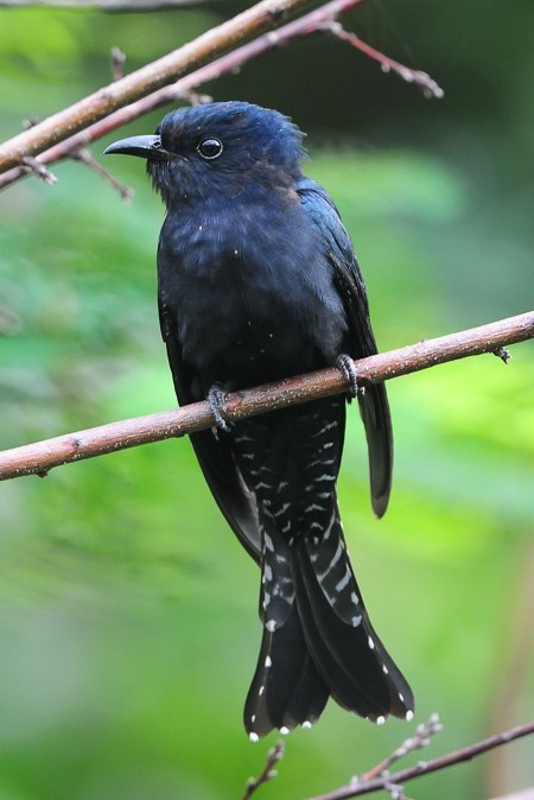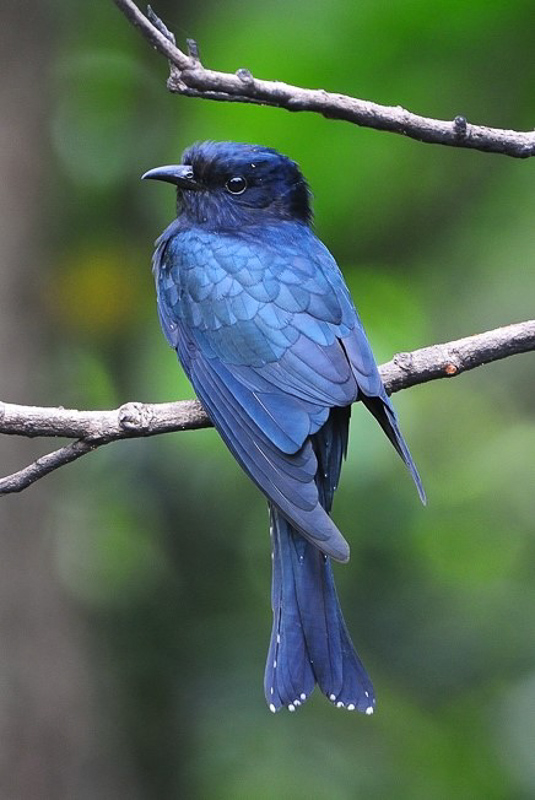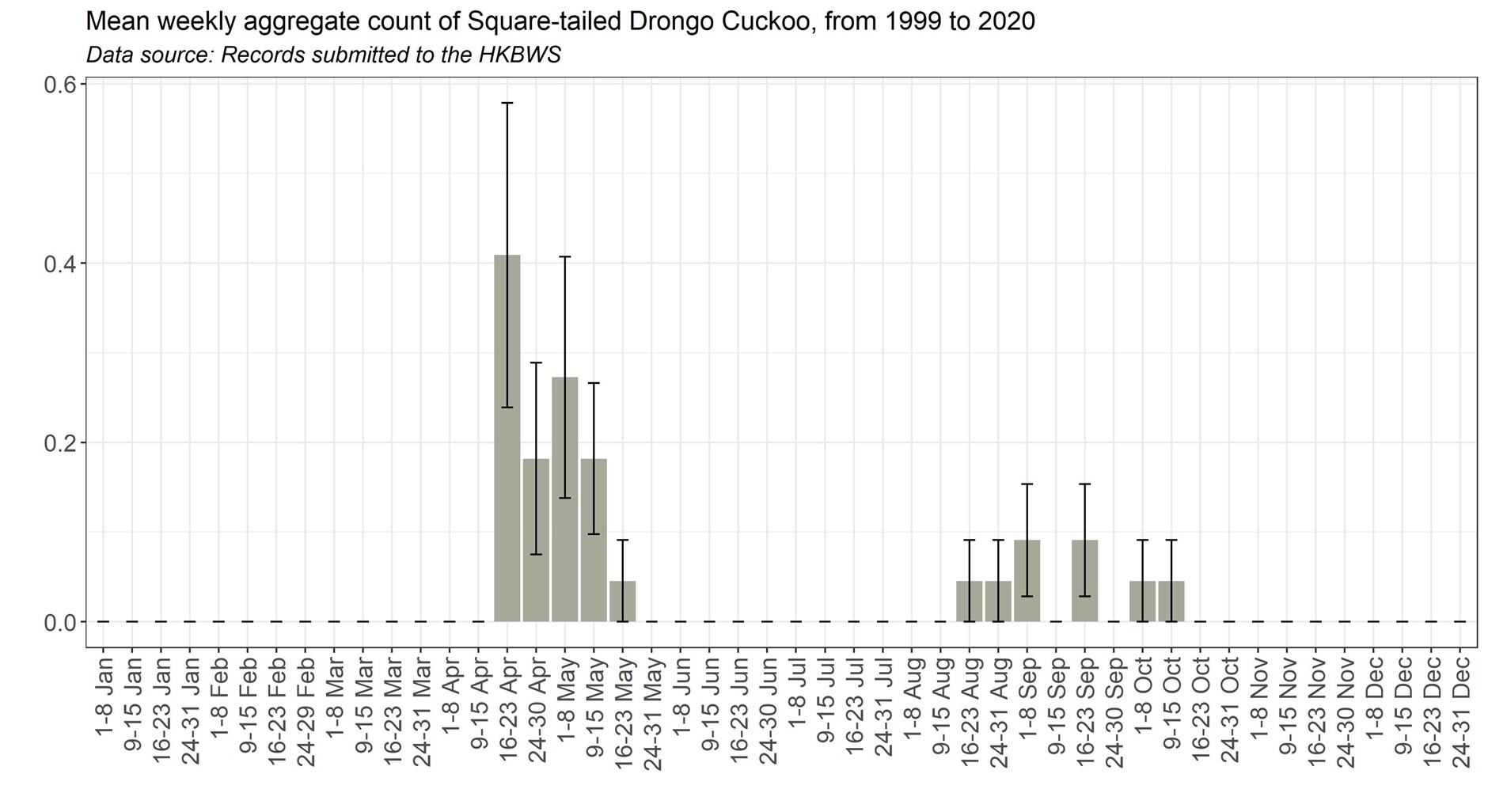Square-tailed Drongo-Cuckoo Surniculus lugubris 烏鵑
Category I. Scarce passage migrant, mainly in spring, to wooded areas.
IDENTIFICATION

Oct. 2011, Kinni Ho. Juvenile.
23-25 cm. A slim, drongo-like cuckoo with a slightly forked tail and a slender, arched bill. Adults are glossy bluish-black overall except for the undertail coverts and outermost undertail feathers which are finely barred white. Juveniles (illustrated) are dull blackish with a variable amount of white spotting on the body, wing-coverts and tail tips.

Oct. 2011, Kinni Ho. Juvenile.
Juveniles are dull blackish with a variable amount of white spotting on the body, wing-coverts and tail-tips.
VOCALISATIONS
The territorial call is a loud clear usually 6-note whistle that rises in tone and may be rendered as “I’m a drongo cuckoo”.
Also gives an excited modulated call similar to other cuckoos.
DISTRIBUTION & HABITAT PREFERENCE
Most records are from Tai Po Kau and Po Toi but has also been recorded at nine other sites in the northwest, central and eastern New Territories and on HK Island. Found in a variety of wooded habitats including forest, shrubland, fung shui woods and stands of trees at the edge of wetlands or roads.
OCCURRENCE
A passage migrant that has occurred from 6 April to 21 May and 21 August to 15 October, with more records in spring (Figure 1). First recorded on Po Toi on 9 May 1999 (Cheung 2004), all records are of single birds. Birds in spring are frequently noted singing, but usually remain at a site for only a day or two, occasionally up to 11 days, and thus appear to be migrants. An unusually long-staying bird remained at Tai Po Kau from 22 April to 13 May 2015. In autumn, records are of short-staying individuals apart from a juvenile in Tai Po Kau during 21-24 August 2004 and one on Po Toi during 1-15 October 2011.
BEHAVIOUR, FORAGING & DIET
No observations reported.
RANGE & SYSTEMATICS
The taxonomy of the former “Drongo Cuckoo Surniculus lugubris” complex is not fully resolved. Of three species currently recognised, only Square-tailed Drongo Cuckoo S. lugubris occurs in China; it is polytypic, with subspecies barussarum breeding from eastern India through northern Burma and north Indochina to southern China, where it is a summer visitor to Hainan and from Yunnan east to Fujian and north to southern Shaanxi; it winters south to Malaysia and the Greater Sundas (Payne 1997, Payne and Kirwan 2020).
CONSERVATION STATUS
IUCN: Least Concern. Population trend decreasing.
Figure 1.

Cheung, H. F. (2004). Drongo Cuckoo at Po Toi: the first record for Hong Kong. Hong Kong Bird Report 1999 & 2000: 189-191.
Payne, R. B. (1997). Family Cuculidae (Cuckoos) in del Hoyo, J., Elliot, A. and J. Sargatal. Handbook of the Birds of the World, vol. 4: Sandgrouse to Cuckoos. Lynx Edicions, Barcelona, Spain.
Payne, R. B. and G. M. Kirwan (2020). Square-tailed Drongo-Cuckoo (Surniculus lugubris), version 1.0. In Birds of the World (J. del Hoyo, A. Elliott, J. Sargatal, D. A. Christie, and E. de Juana, Editors). Cornell Lab of Ornithology, Ithaca, NY, USA. https://doi.org/10.2173/bow.asidrc3.01

